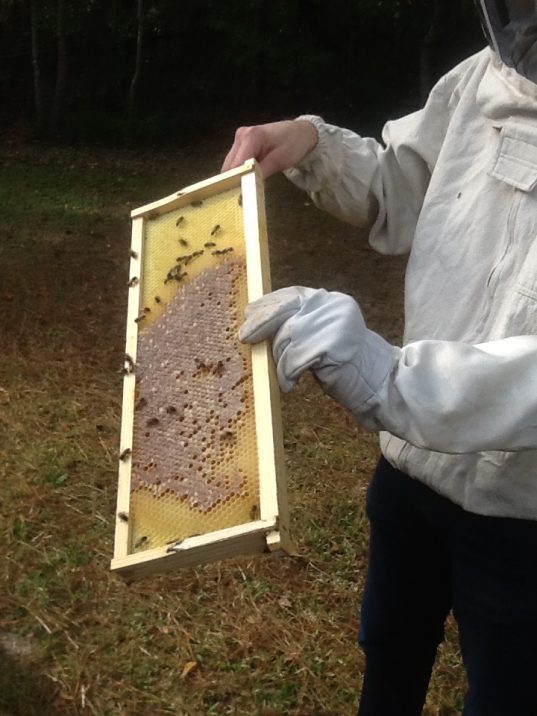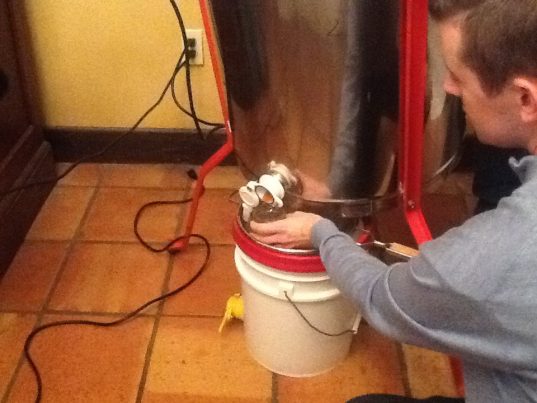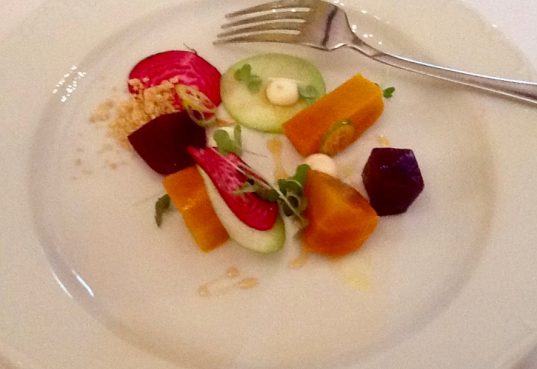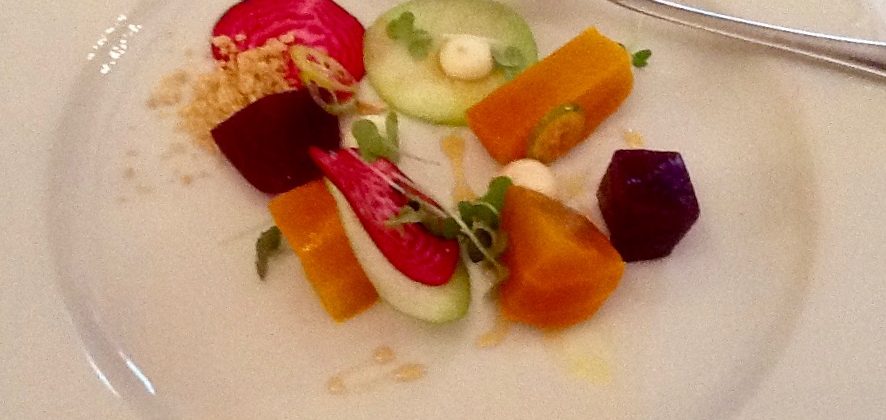Honey Harvesting at La Provence
A few months back I was invited to La Provence, John Besh’s lovely country restaurant on the north shore of Lake Pontchartrain. I had visited La Provence a few years ago when I not only had a wonderful Sunday brunch, but walked through the herb and vegetable garden behind the auberge, and met and fed scraps to the pigs raised there – a delightful morning, indeed.
This trip out, a group of us were treated to a lesson on bee keeping and honey harvesting by chef, Erick Loos, and the in-house bee-keeper (and retired surgeon), Dr. Andy Leonards.
As we watched them suiting up in their protective gear, and light up their hand-held smokers (the smoke protects against stings by distracting the bees and putting them into survival mode, thus deflecting attention away from beekeepers), we were schooled in a number of facts about bees and honey, a few of which I’m going to share here with you.
In summer, queen bees lay 1,500 – 2,000 eggs a day. Those eggs take 15 days to hatch. While there are 20,000 – 60,000 bees in a hive at the height of the season (they are most active in the spring), there are usually only about 50-200 males. All of the work is done by females. I think I will just leave that fact alone!
During the heat of summer, worker bees go out to get water, bringing it back to the hive, where they fan their wings to keep the hive at no hotter than 92 degrees. Harvest in usually in July, and if it’s a good year, they’ll refill for another harvest in the fall. Ordinarily, about 56 pounds of honey is left in the hives for the winter, as bees don’t produce during this, their dormant season, and sometimes they need to be fed sugar water to keep them going.
Bees are very hard workers – they work 24 hours a day, and fly about 2.5 million miles to produce one jar of honey – and we are very grateful to them for that.
Unfortunately, there is still serious collapse of hives occurring – it’s believed that the mono-culture of crops, and GMO crops with built in pesticides are contributing to the collapse – and the life expectancy of queen bees is shorter now. Dr. Leonards told us he lost a hive last year, and among commercial bee keepers, hives are down about half.
After our lesson in bee keeping and their work, Dr. Leonards and Chef Loos retrieved the hives, and we then watched as they extracted the honey.


La Provence produces an intensely flavored honey. It’s used, as one might expect, in some of their Sunday brunch dishes, like house made yogurt with toasted pecan granola, which is drizzled with the honey, but Chef Loos served us a dish with a somewhat unusual use for the honey, this beet salad composed of roasted and raw beets, and drizzled with a bit of honey, then garnished with bee pollen.







